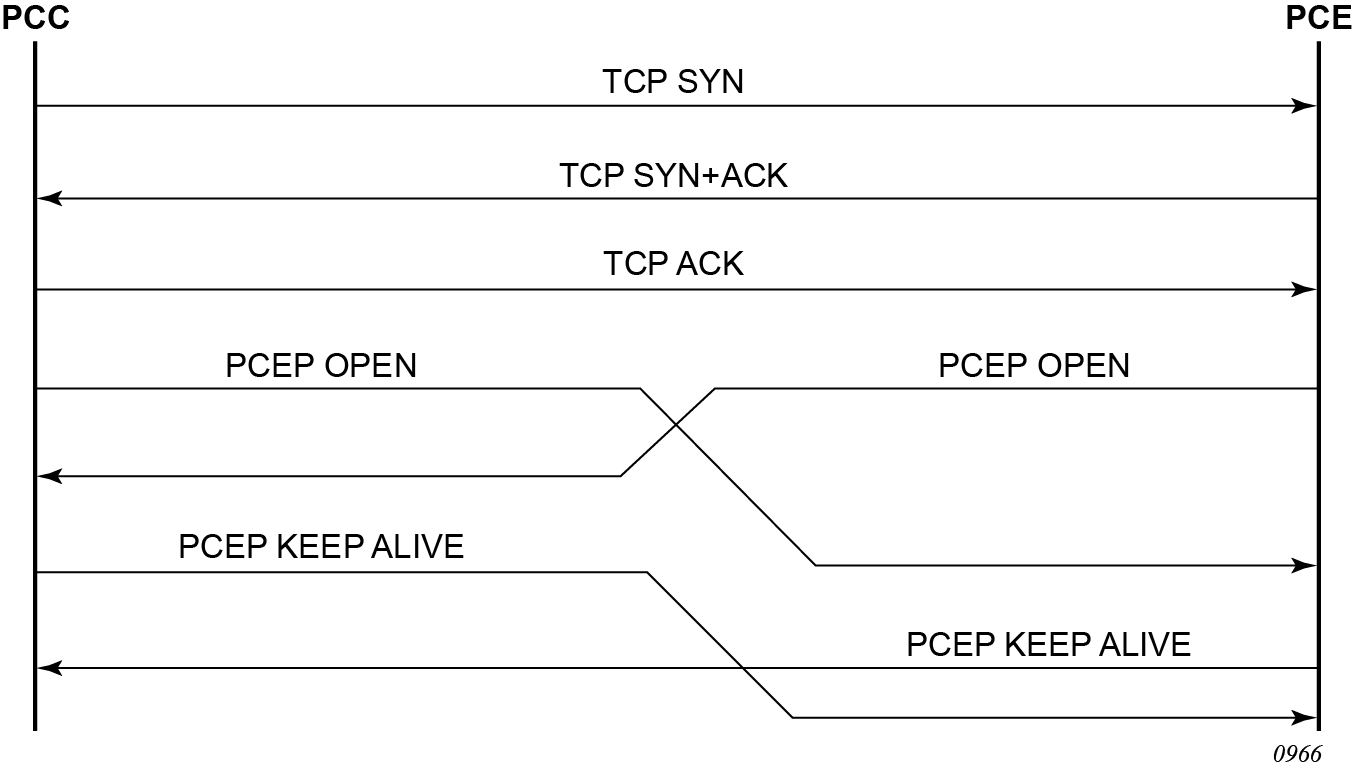The PCEP protocol operates over TCP using destination TCP port 4189. The PCE client (PCC) always initiates the connection. After the user configures the PCEP local IPv4 or IPv6 address and the peer IPv4 or IPv6 address on the PCC, the PCC initiates a TCP connection to the PCE. If both a local IPv4 and a local IPv6 address are configured, the connection uses the local address of the same family as the peer address. When the connection is established, the PCC and PCE exchange OPEN messages, and this process initializes the PCEP session and exchanges the session parameters to be negotiated.
By default, the PCC attempts to reach the remote PCE address out of band using the management port. If it cannot, it attempts to reach the remote PCE address in band. The user can modify the configuration of the peer to attempt connecting in band only or out of band only. When the session comes up out of band, the management IP address is used as the local address. The local IPv4 or IPv6 address configured by the user is only used for in-band sessions and is otherwise ignored.
A keepalive mechanism is used as an acknowledgment of the acceptance of the session within the negotiated parameters. It is also used as a maintenance function to detect whether the PCEP peer is still alive.
The negotiated parameters include the keepalive timer and the dead timer, and one or more PCEP capabilities such as support of stateful PCE and the SR-TE LSP path type.
The following figure shows PCEP session initialization steps.

If the session to the PCE times out, the router acting as a PCC keeps the last successfully-programmed path provided by the PCE until the session to the PCE is reestablished. Any subsequent change to the state of an LSP is synchronized at the time the session is reestablished.
When a PCEP session to a peer times out or closes, the rate at which the PCEP speaker attempts the establishment of the session is subject to an exponential back-off mechanism.